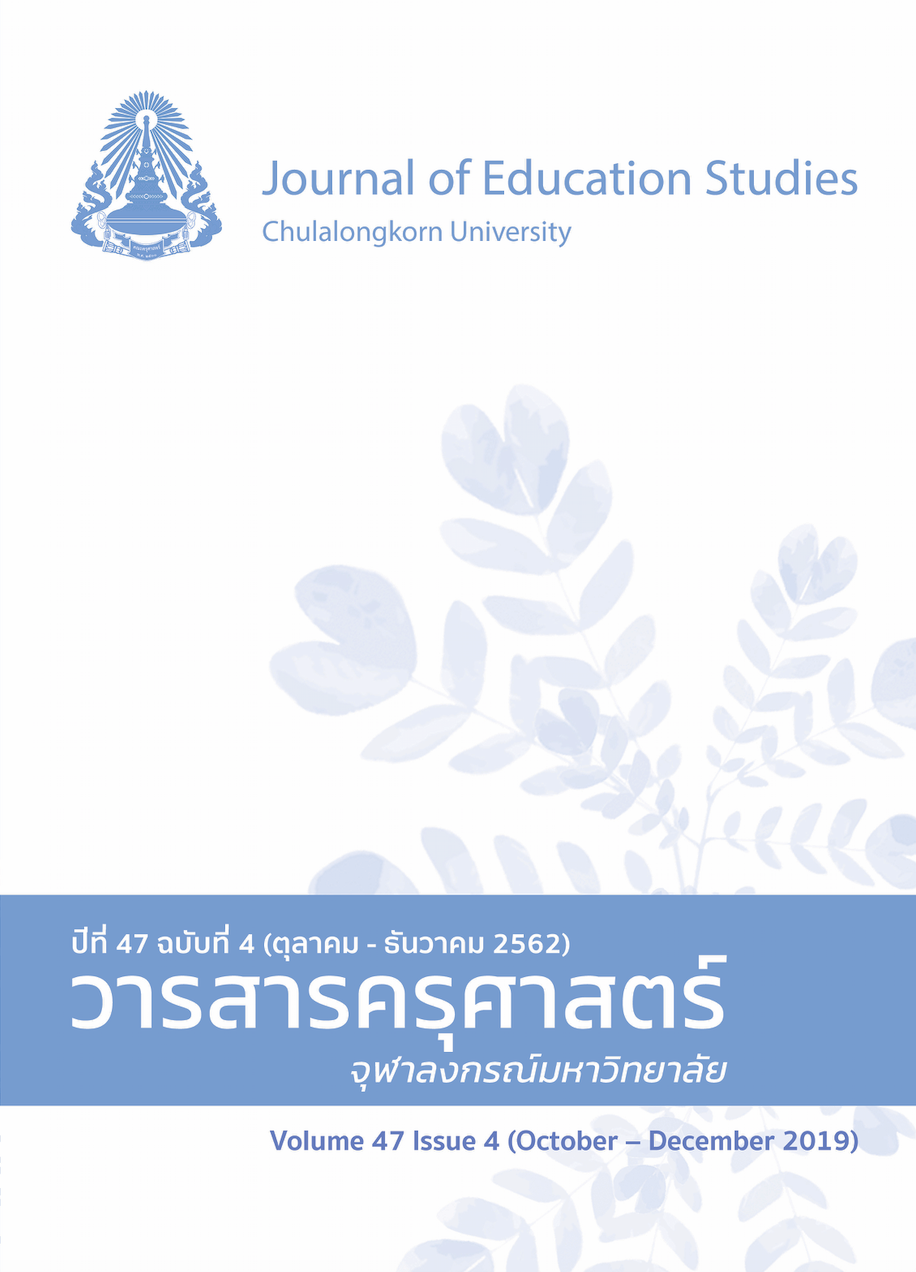A Study of Out-of-Class English Language Listening Activities of Lower Secondary School Students
Keywords:
OUT-OF-CLASS ENGLISH LANGUAGE ACTIVITIES, ENGLISH LISTENING ABILITY, LOWER SECONDARY STUDENTSAbstract
This study aimed to explore out-of-class English language listening activities and to study the process of out-of-class English language listening activities of lower secondary students. The samples of this study were 140 ninth-grade students obtained from a calculation using the formula of Raosoft (2004). Two out of five schools under the office of secondary education area 42 and were selected by convenience sampling method. The research instruments were the questionnaires and the interview. The findings revealed that three out-of-class English language listening activities, including listening to English songs, watching English movies, and watching English TV programs, were mostly used in aspects of the frequency and the duration of the use. When multiple comparisons between frequency and duration of activity use were carried out, the results showed that the use of out-of-class English language listening activities of the high proficiency group and the low proficiency group students were significantly different at the significance level .05. The findings showed that students mostly used their mobile phone devices to do the activities outside the classroom. Students of the high proficiency and low proficiency groups were different in their use of the activities as well as in the solutions to the listening problems outside the classroom.
References
Angwattanakul, S. (1994). English teaching methods. (3rd ed.). Bangkok: Chulalongkorn University Press, [in Thai].
Chaveesuk, S., & Vongjatupat, S. (2012). Unified theory of acceptance and use of technology. KMITL Information Technology Journal, 1(1), 1-21.
Chen, A. (2009). Listening strategy instruction: Exploring Taiwanese college students’ strategy development. Asian EFL Journal, 11(2), 54-85.
Chusanachoti, R. (2009). EFL learning through language activities outside the classroom: A case study of English education students in Thailand (Doctoral Dissertation). Available from ProQuest Dissertations and Theses database. (UMI No. 3363815)
Chusanachoti, R. (2016). A causal comparative study: Effect of out-of-class English activities on English skills development of undergraduate students majoring in English teaching. Kasetsart Journal of Social Sciences, 37(2), 188-199.
Donkaewbua, S. (2015). Linguistics for English teachers. Bangkok: Chulalongkorn University.
Embi, M. A. (1996). Language learning strategies employed by secondary school students learning English as a foreign language in Malaysia (Unpublished Doctoral Dissertation). University of Leeds, Leeds.
Harmer, J. (2007). How to teach English. ELT journal, 62(3), 313-316.
Hyland, F. (2004). Learning autonomously: Contextualising out-of-class English language learning. Language Awareness, 13(3), 180-202.
Jariyatra, A. et al. (2012). Looking back and moving forward for English learning. Bangkok: S.ASIA Press.
Krasair, P., & Nithivaraphakul, K. (2012). A study of problems, needs, self-confidence, and attitudes of learning English of first year students of Phranakhon Rajabhat University. Rajabhat Phranakhon Research Journal, 7(1), 35-47.
Kuh, G. D. (1994). Student learning outside the classroom: Transcending artificial boundaries. ASHE-ERIC Higher Education Report No. 8. Retrieved from https://files.eric.ed.gov/fulltext/ED394444.pdf
Lahje, T. (2011). The development of english communicative listening exercises for matthayom three students of Sarasas Witaed Suksa School. Pathumthani University Academic Journal, 3(1), 99-106.
Noom-Ura, S. (2013). English-teaching problems in Thailand and Thai teachers' professional development needs. English Language Teaching, 6(11), 139-147.
Oxford, R. L. (1992). Research on second language learning strategies. Annual review of applied linguistics, 13, 174-187.
Raosoft. (2014). Sample size calculator. Retrieved from https://www.raosoft.com/samplesize.html
Rubin, J. (1975). What the "good language learner" can teach us. TESOL Quarterly, 9(1), 41-51.
Sangkapan, J., Boonprakarn, K., & Krairiksh, W. (2015). Situations and problems in learning English at secondary schools affiliated with municipalities in the three southern border provinces. In The 6th Hatyai National Conference, 270-284. Retrieved from https://www.hu.ac.th/conference/conference2015/proceedings/data/ภาคบรรยาย/E-O-การศึกษา/270-126E-O(เจตน์สฤษฎิ์%20สังขพันธ์).pdf
Teo, A. (2007). Intensive summer teaching of English listening and speaking skills: A case study of Liberal Arts students at Prince of Songkla University. Bangkok: The Thailand Research Fund.
Wenden, A., & Rubin, J. (1987). Learning strategies in language learning. Upper Saddle River, NJ: Prentice-Hall International.
Wiengnil, A. (2010). A study of out-of-class English language learning activities of secondary school students in english program (Doctoral Dissertation). Retrieved from https://cuir.car.chula.ac.th/handle/123456789/30421
Yaibuates, M. (2015). Development of an instructional model of call using metacognitive listening process to enhance English listening comprehension ability of upper secondary school students (Unpublished Doctoral Dissertation). Chulalongkorn University, Bangkok.
Yule, G. (2010). The study of language. Cambridge: Cambridge University Press.




